Colette’s sparkling prose made her an international sensation. Although her fictional plots and characters are often scandalous, her famous journal Paris from my Window is more subtle with its observations of nature and descriptions of the loyal tenants of the district of the Palais Royal. In fact, stories of children dominate the pages of that particular work. Today in front of that same window at 9 Rue de Beaujolais overlooking the gardens of the Palais Royal stands the current owner of her apartment, French interior designer and avid collector of contemporary art Jacques Grange, who relates to that carefree childhood feeling that Colette found so inspiring and admits that certain of the objects he collects stimulate this familiar sentimental happiness.
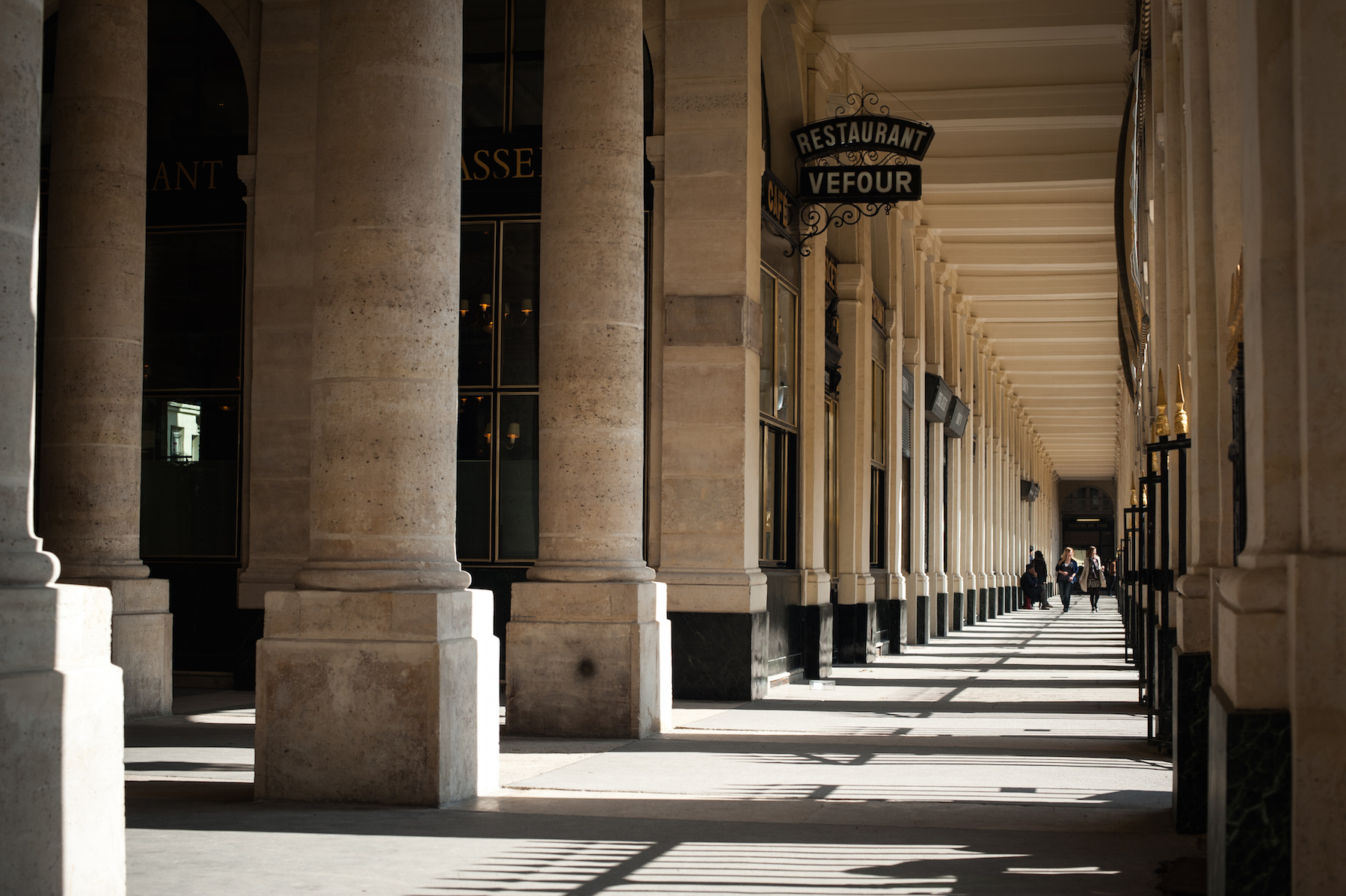
Like the toy store beneath it, Jacques’s home is full of treasures each meticulously chosen and imaginatively placed with sometimes humorous associations. “See how this laughing Smurf is placed in front of the bosom of Niki de Saint Phalle’s artwork. It gives a whole different meaning, doesn’t it?” Jacques asks. Three “sleep drawings,” as the designer calls them, depicting people asleep, two by British artist David Hockney and one by French poet Jean Cocteau, decorate the walls of his bedroom. “It’s like you mistakenly walked into someone’s bedroom and saw them sleeping. It is an artistic intervention that can be considered a playful indiscretion.” These secret narratives are everywhere.
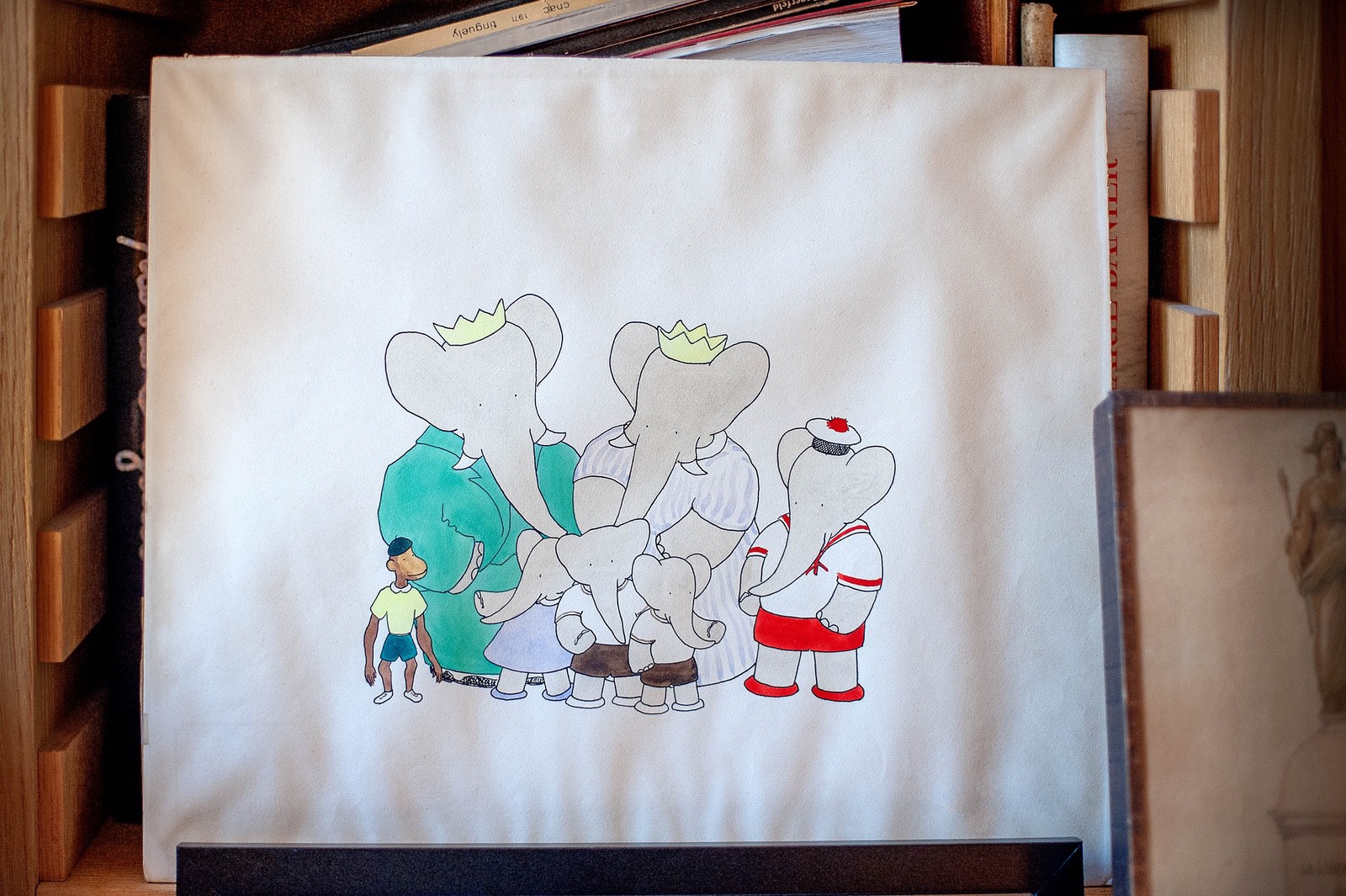

Jacques studied at the École Boulle and École Camondo, two highly selective traditional decorative arts schools in Paris, and in 1965 he joined the firm of Henri Samuel. “With Henri Samuel, I discovered quality,” he says. His time at Henri Samuel was followed by a brief tenure at Alain Demachy until he founded his own firm. His talent was soon recognized by the likes of Yves Saint Laurent, the Rothschilds and the Vicomtesse de Noialles and gained him prestigious commissions around the world from New York to Paris and Marrakech. Jacques has designed interiors for houses, yachts, even hotels like the Mark Hotel in New York in collaboration with the Parisian gallerist Pierre Passebon. His most recent commission, though, has been the restoration of the Palazzo Margherita of Francis Ford Coppola and his daughter Sofia, in Bernalda, a small town located in the Basilicata region of Italy. “When I received a call from the Coppolas, I just couldn’t believe it.” Jacques’ achievements have been acknowledged not only by the stars of Hollywood, but also by the French establishment which honored him with the highest possible decoration, the Légion d’honneur. I ask him about the day he was knighted Chevalier de Légion d’honneur and to my surprise he blushes. “I have one principle, you do not ask, you do not refuse, you do not wear.”

Jacques has a portrait of a Grand Officer of the Légion d’honneur, his predecessor, Colette. Shot by well-known photographer Irving Penn, her expression in that photograph is by no means affectionate or friendly. In fact, she hated to appear soft according to her writer friend Francis Carco. The photographer views her like an eternal icon and as a consequence chooses to isolate her from her surroundings. In addition her posture is somewhat dramatic as she is shown raising her head with her clenched fist. “The frame is made with the bedspread of Colette and behind it there is the famous blue paper that she wrote on together with some flowers that an admirer picked the day of her funeral,” Jacques says. Blue paper was apparently Colette’s preference because it was easier on her eyes. Jacques has carefully aligned this photograph behind a bust of Colette, given to him by the wife of Colette’s last husband when he bought the apartment. “I was selected by the family of Colette. At first I couldn’t afford it, so they rented it to me. A few year later I managed to buy it.” In a strange way, there are many similarities between the lifestyle that Colette led in this house and the one that Jacques is leading now. The most astonishing resemblance is the need to be around creative people. “It makes me feel incredibly alive,” Jacques says. Like Colette, he has received here artists, intellectuals and members of the aristocracy. His entourage has included people like Princess Caroline of Monaco, Yves Saint Laurent, Paloma Picasso, Damien Hirst, Guy de Rougemont and Francois Xavier Lalanne.
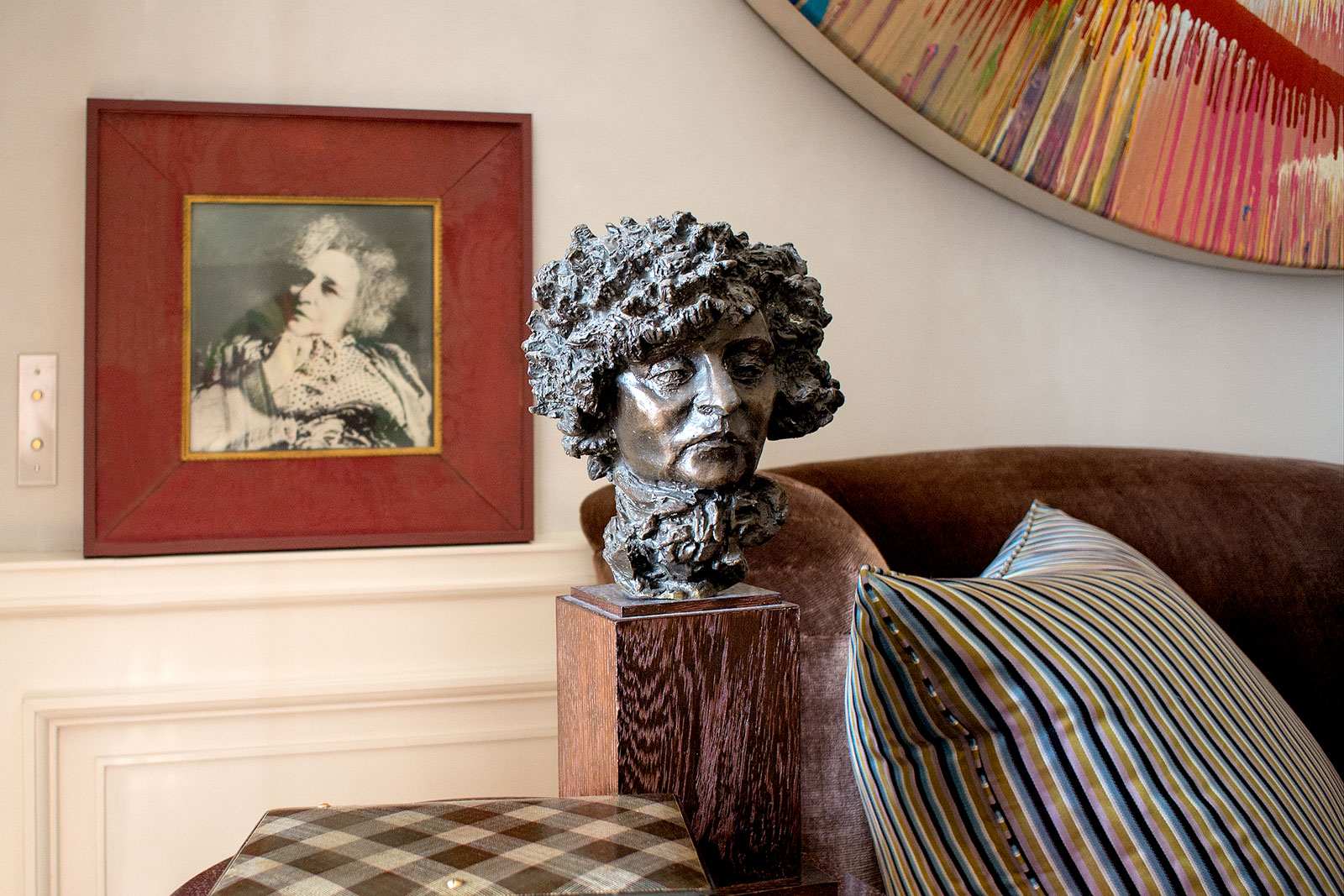

When I remind him of his 1988 television appearance, he nervously laughs. The young and shy Jacques was invited by Frédéric Mitterrand, a former minister of culture in France but once the host of his own show, to speak about Colette’s apartment. In that interview he had said that when he first moved in, he heard the noises that Colette described in her book Blue Lantern. “I was indeed incredibly shy back then and it is true that the noises in the house and the sound of the children playing in the garden were exactly as she had described them! Colette’s shadow was ever so present that I hesitated to change many things.” But the second time he redecorated the house, “I wanted to kill Colette,” Jacques jokingly says of his attempt to free himself from the legacy of his predecessor. This transformation compelled him to donate a few Colette objects to the Colette museum located in the birthplace of the writer in Burgundy. Nonetheless, he has kept a number of things in tribute to her — a pen, a sketch by Jean Cocteau with the profile of Colette — and has recently put on reserve a Louis Philippe floral paperweight that once belonged to her. His collection includes objects that refer not only directly but also indirectly to her. Colette who grew up in the countryside was known for her affection for animals and especially cats. She wrote, “Animals help us reconcile with the animal instinct we have that people in cities too often end up being totally devoid of.” So is the bronze cat by Swiss sculptor Alberto Giacometti a remembrance of Colette’s soft spot? “Certainly.”
Il faut une faute de goût pour réussir une decoration.
Jacques GrangeA Colette quote that I find relevant to Jacques’s profession is “In the matter of furnishing, I find a certain absence of ugliness far worse than ugliness.” So, I ask Jacques if an “ugly” looking object would disrupt harmony in interior design but render the final product more interesting? “Absolutely!” Jacques replies. “Il faut une faute de goût pour réussir une decoration” (you need an error in taste to make a decoration succeed). “Otherwise it’s too sterilized, too perfect,” he adds. We both look around for such a mistake, but cannot seem to find one. The mélange of things is so well balanced that you wouldn’t be able to instantly locate one “faute de goût.” A bottle of sleeping pills that once belonged to Marilyn Monroe, which he bought at an auction in Hollywood, is combined with a Max Ernst etching and a small bronze mouse designed by Claude Lalanne. A little Calder kinetic sculpture, a present from the artist to Jacques, is combined with a neoclassical bust and colorful feathers from the Amazon. A Ron Arad fixture sheds light on Hiroshi Sugimoto’s photograph “The Black Sea” that itself hangs over a 1930’s bronze console by Jean Michel Frank. I find photographic snapshots and other portrait pictures organized in the same manner about the apartment. Next to a portrait of Pablo Picasso and a Polaroid picture of Liza Minelli shot by Andy Warhol is a picture of Grange with Princess Caroline of Monaco sitting next to Emperor Mogho Naba, ruler of The Mossi people, the largest ethnic group in Burkina Faso.
The designer’s favorite Yves Saint Laurent/Pierre Berge project was the dacha he did for them in Russia. The inspirations were the opulent arcane interiors and the geometrically formal French-style gardens found in the movie Last year in Marienbad together with movie sets designed by French artist Christian Bérard for Jean Cocteau’s Beauty and the Beast. “Yves was crazy about Christian Bérard. When it came to certain inspirations, he was quite an obsessive character.” The garden became a ten-year project and they placed sculptures everywhere as if on a chessboard. “We had bought seven times the same sculpture!” Several other commissions by Yves Saint Laurent followed — the house in Marrakech, the design of three retrospective exhibitions in Paris, Moscow and Beijing and the offices in Avenue Marceau.

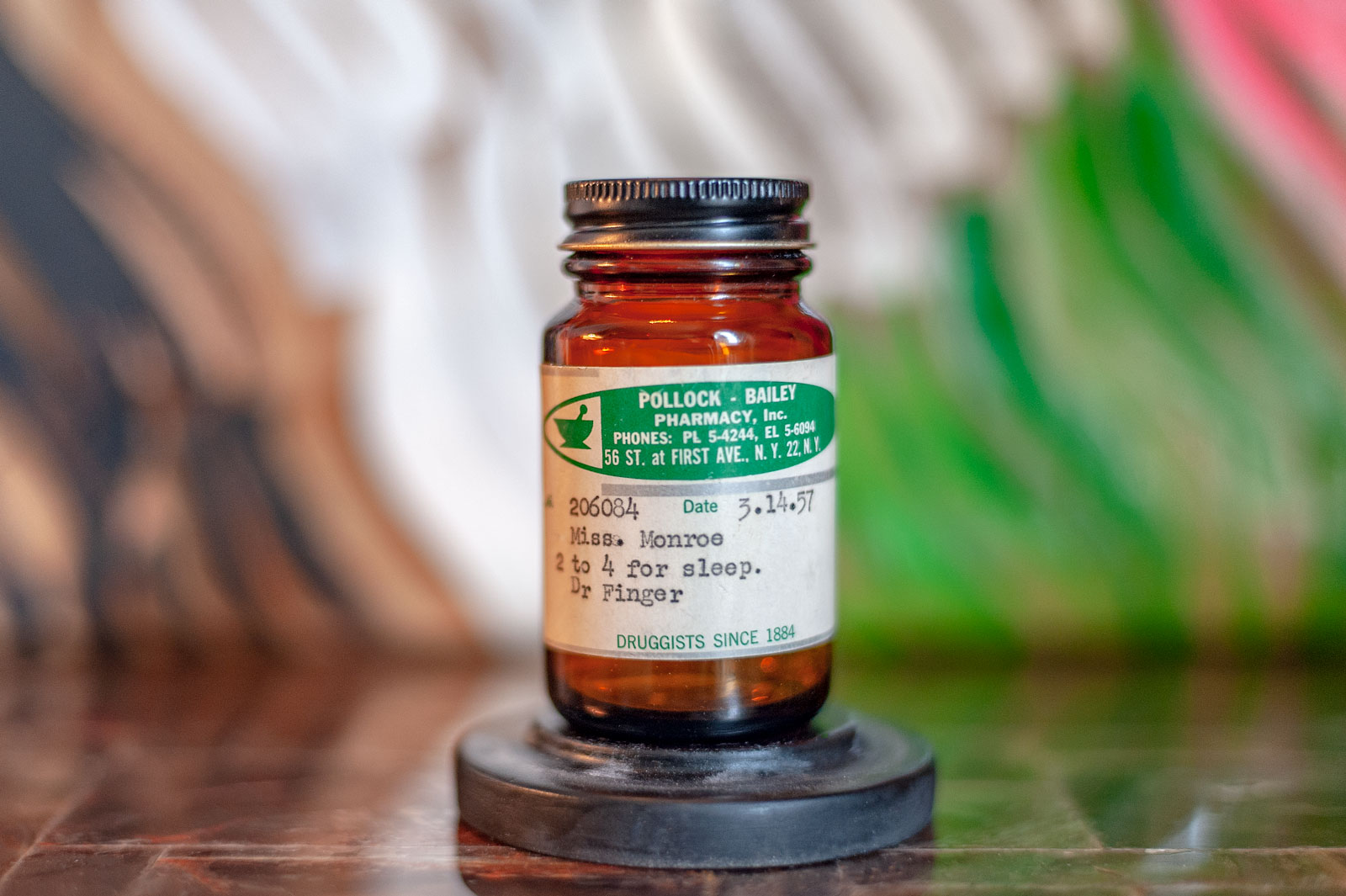
How did Jacques feel when Christie’s auctioned Yves Saint Laurent’s private collection in 2009? “I was sad at first, but then I saw it as a recognition of the job I have done”, he replies. The sale was indeed billed as “the sale of the century” since it included hundreds of famous paintings, artifacts, and sculptures by the likes of Edgar Degas, Piet Mondrian, Constantin Brancusi, Eileen Gray, Pierre Chareau and Jean Michel Frank. Speaking of auctions, Jacques’s most enjoyable auction hunt has been the search for portraits of the Viscountess Marie Laure de Noailles. Today he is proud to show six such portraits, three by Man Ray (including the famous solarized one), one by Dora Maar, one by Horst P. Horst and one by George Hoyningen-Huene, all horizontally aligned on the wall of his study underneath a Christian Bérard triptych.
“The taste of the Noailles has been a tremendous influence on my work,” Jacques explains. Marie-Laure Bischoffsheim, who grew up to become Viscountess Marie-Laure de Noailles, was one of the 20th century’s most daring and influential patrons of the arts. She came from a very rich family, an only daughter, whose great-great-great-grandfather was the Marquis de Sade – an ancestry that may have had something to do with her preference for the bizarre. After a brief affair with Jean Cocteau, she wed in an arranged marriage the ViscountCharles de Noailles, a sophisticated man with a strong interest in art. Admirably, Charles’s gift to his young wife was a portrait drawing of her by Pablo Picasso. The couple built a cubist villa in Hyères with architect Robert Mallet-Stevens, assigned minimalist designer Jean Michel Frank to do the interiors and requested from landscape designer Gabriel Guevrekian a triangular chessboard garden. “The Noailles received there all the Parisian and international elite. What amazed me was the way they had combined old master paintings like Rembrandt, Van Dyck, Delacroix and Goya with the contemporaries of the day, Braque, Chagall, Klee and Matisse,” Jacques says recalling his visit to that house.
The Noailles’s generosity kept the artistic and intellectual life in Paris vibrant and contributed greatly to the surrealist movement. They financed a number of films including Man Ray’s The Mysteries of the Château of Dice, Jean Cocteau’s The Blood of a Poet, and Luis Bunuel’s joint production with Salvador Dali’s The Golden Age. “These movies shocked audiences in the 1930’s. They still do,” Jacques comments and reveals a photo booth strip that pictures Noailles wearing funny glasses with Belle de Jour actor Jean Sorel, a couple at the time, striking different poses. “She was 60 and he was 20! Bravo Marie Laure!” Jacques compliments the enduring charm of this grand lady whom he met in her late 60’s. “She was very eccentric, very original and very creative.”

Books are not often associated with the surreal, but in the apartment they too have a role in determining the playful nature of the treasure trove. Arranged in stacks, they cover practically every surface and create a range of mountains. Some of these peaks have peculiar paperweights such as the shark tail that makes me think of Colette’s notion that every book is a conquest, a jungle of ideas that will reveal themselves one day in a tranquil landscape. At the moment Jacques is taming a book by Werner Spies, a German art historian and exhibition designer who also served as a director of the Centre Georges Pompidou. Jacques is familiar with exhibition design since he has designed a number of exhibitions, Russia at the Guggenheim in New York, Elsa Schiaparelli at the Musée de la Mode et du Textile in Paris and the three Yves Saint Laurent retrospectives. The book, though, that strikes me the most is Arthur Rimbaud’s book of poems. “Victor Hugo had once described the young Arthur Rimbaud as an infant Shakespeare,” Jacques says and points to the two bleak and romantic paintings by Victor Hugo that decorate his wall. Rimbaud himself had written that “genius is the recovery of childhood at will” and indeed Jacques in that sense is a definitely a genius.
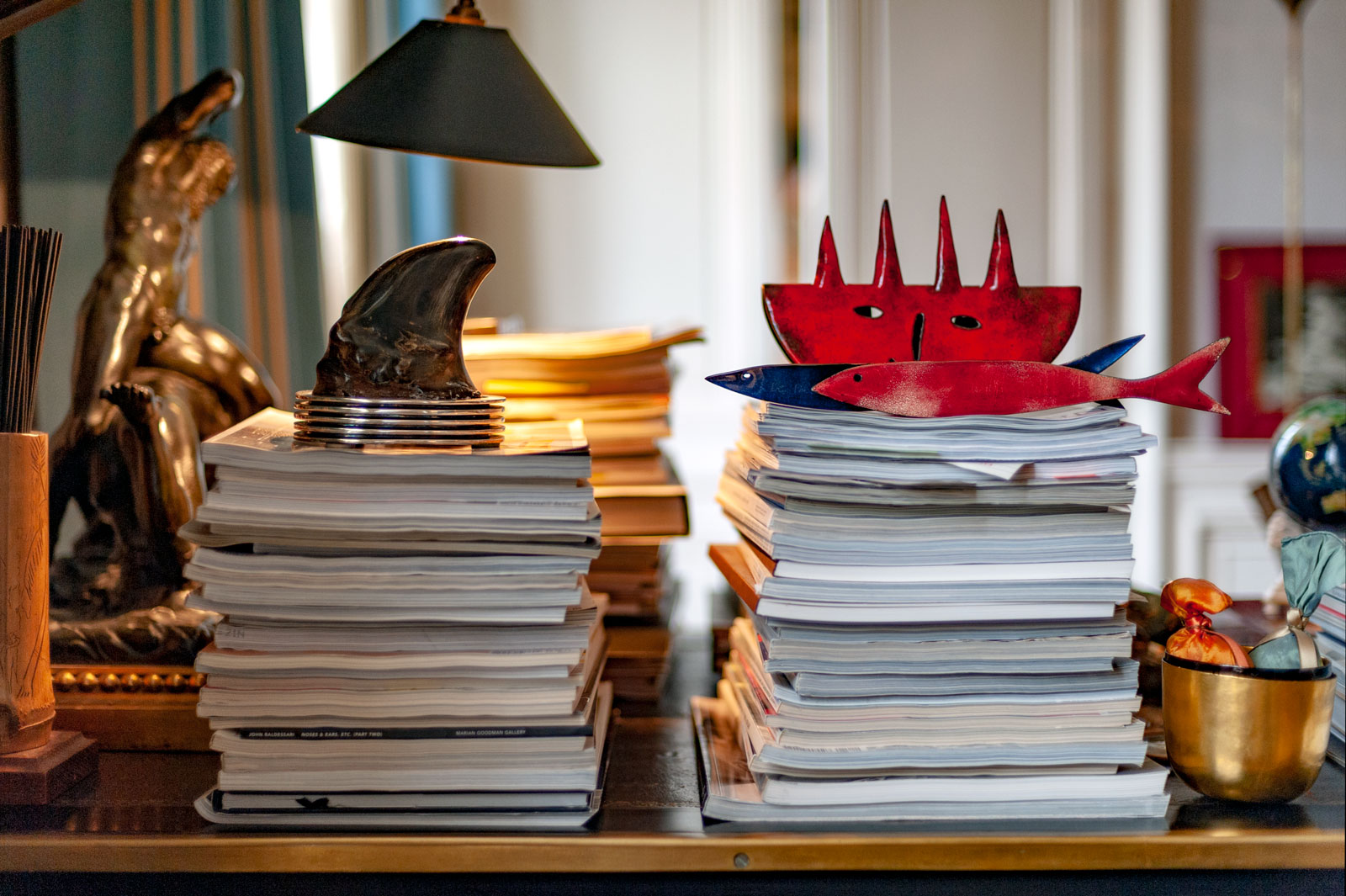
Paris, 2012. All photos © Alexia Antsakli Vardinoyanni www.artflyer.net




